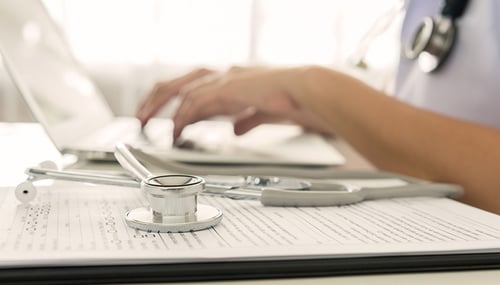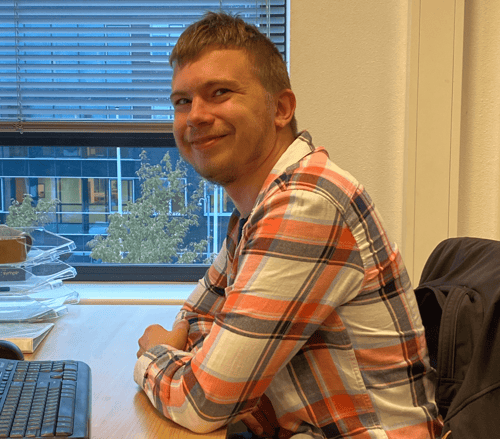The Safety-II approach: Learning from what goes right

Table of contents
What is the Safety 2 approach in healthcare?
Safety II is a modern patient safety initiative that focuses on what’s going right in a system or process. Consider that in 98% of cases, a system and the people, processes, equipment, software, etc., within it function well and do what’s intended. Yet most safety approaches focus on the 2% of cases that don’t deliver the desired results based on their design. It seems more efficient, then, to focus on the things that are going well. But how can we manage and learn from the absence of incidents in an organization

What is the Safety 1 approach in healthcare?
The Safety-I approach is used to report on and analyze (near) incidents and calamities by examining failures in a system. Safety-I assumes that processes are predictable, so that when a link within a process fails, the causes can be identified and analyzed. Using this approach, Incident Reporting Committees look at a sequence of events and establish the logical link(s) between the incident and its root causes. In this way, the origin and course of the incident or error become transparent, enabling us to learn from it and ultimately improve processes.
The origins of the Safety-II approach and how it differs from the Safety I approach
Representing a new way of thinking, Safety-II starts by looking at daily practices—not at the design of the guidelines, processes, and protocols. The analytical method used in Safety-II originally stems from the technical sector, and was first used in aviation and construction before it was adopted for use in healthcare.
Safety-I vs. Safety-II
|
Aspect |
Safety-I |
Safety-II |
|
Focus |
Prevention of failures and accidents. |
Resilience and adaptability to manage varying conditions. |
|
Perspective |
Problem-centric; seeks to avoid errors. |
System-centric; focuses on understanding how systems succeed despite variability and challenges. |
|
Management |
Emphasizes compliance with standards and procedures. |
Encourages learning from success and failure to improve system resilience. |
|
Response |
Reactive; addresses failures and errors after they occur. |
Proactive; anticipates and adapts to changing conditions to prevent failures. |
|
Measurement |
Performance is measured based on negative outcomes (e.g., accidents, errors). |
Performance is measured by the system's ability to maintain functionality and adaptability under varying conditions. |
|
Organizational Culture |
Typically hierarchical and focused on accountability for errors. |
Promotes a culture of trust, collaboration, and continuous learning from both successes and failures. |
Safety-II provides insight into human factors
Safety-II informs us that we cannot manage safety and improvements if we don’t know the specifics of how things work in practice. Healthcare is like other industries in that it follows stringent guidelines and protocols. But the practice of healthcare is complex and consists of many different dynamic processes that impacts patient safety.
>> Learn more about patient safety on our Patient Safety topic page.
One important variable is the human factor, often the reason that guidelines and protocols cannot always be uniformly implemented. Every patient, client, and practitioner is different and therefore approaches each situation differently. For example, some patients may be more nervous and therefore require more of a practitioner’s time to prepare for an operation.
A perfect match to the FRAM method
The human factor in Safety-II makes it a perfect match to an analytical method called Functional Resonance Analysis Method (FRAM) (prof. Erik Hofnagell - 2017). The goal of FRAM is to map work as it is accomplished within the daily reality of the workplace.
The FRAM method takes into account people’s routines, customs, and habits. It maps both risks and best practices within the system based on these daily workplace factors. The method is also in line with the philosophy of Appreciative Inquiry (AI) (appreciative research), in which the stimulation of what goes well in the workplace is the starting point.
How is Safety-II connected with agility in organizations?
Committed employees make your organization stronger. Not only because they are more agile, but also because they are more likely to report incidents when things do go wrong. Download our eBook 'Staff Commitment' about increasing the motivation of healthcare professionals.
Safety-II recognize that in modern systems, causes of errors or incidents are often multi-factoral and adjustments can lead to both desired and unintended/undesired outcomes. As a result, agility and resilience are desired qualities, both for organizations and their employees. Flexibility and resilience equate to a state of readiness to adapt to any situation instead of rigidly adhering to work processes and protocols (i.e., work as imagined).
The FRAM method provides insight into how professionals work together all day, under complex circumstances, and the ways in which they must adapt again and again. Analyzing how people and systems respond to unexpected and ever-changing circumstances helps us to create more adaptable organizations and aid individuals in becoming more resilient. That agility and resilience, in turn, can help create safer workplaces for all.
Visit our blog about FRAM for more information.
Implementing the Safety 2 approach using patient safety software
Software can help improve patient safety in any healthcare organization. Even when implementing the Safety 2 method. Our Improvement Manager software is a digital improvement tracking system in which improvement actions from the entire organization come together. Users are able to create one central overview, monitor the progress and evaluate the results to realize structural improvement. Processes that are part of the Safety 2 approach.
Related articles
-
 Patient safety Incident management Reporting data Quality management
Patient safety Incident management Reporting data Quality managementThe importance of incident reporting in nursing
Work accidents and incidents happen in every industry, including nursing. This article shows how reporting can help increase patient safety.
Read more -
 Patient safety Reporting data Quality management
Patient safety Reporting data Quality managementHow to write an incident report
When should an incident report be completed and how should the report be written? In this article we’ll show you our best practices.
Read more -
 Communication TPSC News Organization
Communication TPSC News OrganizationServicedesk Engineer Mitch Dobbe | TPSC
Curious about the work of The Patient Safety Company's servicedesk? Read our interview with Servicedesk Engineer Mitch Dobbe!
Read more
